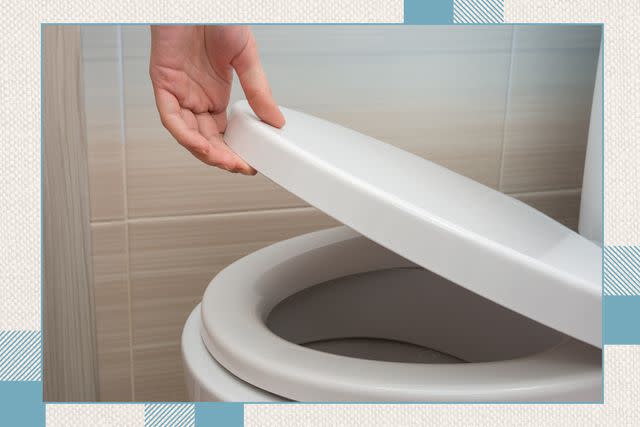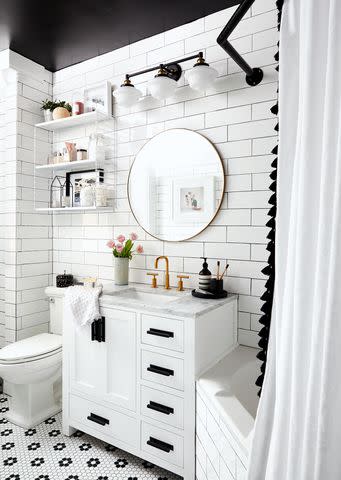Should You Flush the Toilet with the Lid Up or Down?
An abundance of research makes a pretty strong case for always putting the lid down before flushing.
Fact checked by Marcus Reeves
It’s no secret that bathrooms are full of germs. We all regularly wash our hands after using the loo and have a host of powerful cleaning products to leave our toilets sparkling clean. But there’s one thing that not everyone may be on the same page about—whether you should close the lid before flushing the toilet.
As it turns out, research suggests that we definitely should be closing the lid before every flush, no matter how clean your toilet is. After all, toilets have lids for a reason. So if you don’t already flush with the lid down, here’s what you need to know about why you really, really should.

Madhourse / Getty Images | Design: Better Homes & Gardens
The Scientific Study of Toilet Flushing
The significance of bacterial transmission during toilet flushing has been on the radar of the scientific community for quite some time. According to a 2013 literature review, scientists began testing whether bacteria derived from sewage may be present in the air surrounding contaminated areas as early as 1907, and the production of bioaerosols during toilet flushing was first reported in the 1950s. Further studies showed that these aerosols settle onto surrounding surfaces over time, resulting in the spread of fecal organisms on surfaces in the immediate vicinity of the toilet.
Today, scientists continue to study and explore the topic of what’s now been termed “toilet plume aerosols” as well as its potential risks, specifically with relation to the spread of infectious diseases. The COVID-19 pandemic saw an increased public interest in the topic as people worried about the potential for coronavirus diseases to spread through toilet flushing and contaminated surfaces, and many new studies popped up on the topic, as well. While we know a lot more about toilet plume aerosols than we once did, the truth of the matter is that scientists are still studying the topic and exploring the potential risks.
Related: The 7 Best Toilet Brushes of 2023, According to Testing

What You Need to Know About Toilet Plume Aerosols
A 2022 global review found that flushing the toilet can spread contaminated aerosol particles as far as 1.5 meters away, and studies show that these germs can linger in the air for up to 6 hours. The difference in the amount of bacteria spread when flushing with the lid up versus down? Nearly 12-fold, according to a 2011 study from the Journal of Hospital Infection. Take a look in your bathroom at what you have sitting within 1.5 meters of your toilet: You might have your beauty products, your hand soap, your towels, or even your toothbrush (shudder) within that zone. Now imagine these items being covered in microscopic fecal matter and just try not to gag.
Besides the major ick factor, does flushing with the lid up pose any real threat to our health? Can infectious diseases like coronavirus, norovirus, or influenza be spread through toilet plume aerosols? The truth is, scientists are still studying these questions, although several studies have found that bioaerosols produced during toilet flushing could pose a risk for disease transmission. There are numerous factors that influence the likelihood of such a transmission, from the infectious dose of the virus to whether or not the disease is found in feces or vomit in the first place.
Related: 8 Bathroom Items You Need to Get Rid of ASAP
The Final Verdict: Toilet Seat Up or Down?
While flushing with the lid up may pose little, if any, actual risk to your health (that we currently know of), the fact of the matter is that it’s kind of just gross. With all of the time and energy that we spend cleaning our bathrooms, don’t flush all that hard work down the toilet (pun intended) by not closing the lid after you’re finished doing your business. Oh, and maybe make sure your toothbrush isn’t within 1.5 meters of your toilet—just a suggestion!
Related: The 12 Dirtiest Places in the Home (and How to Clean Them)
For more Better Homes & Gardens news, make sure to sign up for our newsletter!
Read the original article on Better Homes & Gardens.

